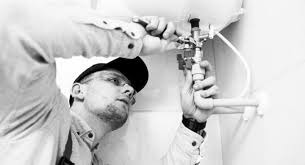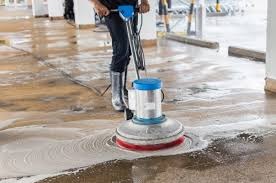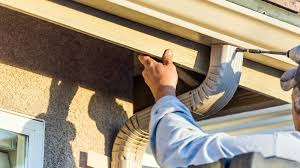A slab leak is a hidden problem that can cause trouble if not caught early. It happens when the pipes under your home’s concrete foundation leak. This can lead to water damage, higher water bills and even structural problems. Studies show that 1 in 10 homes will experience a slab leak at some point, leading to an average repair cost of over $5,000. In San Diego, slab leaks are more common than you might think. That’s why knowing about Slab leak detection in San Diego is essential. With the right help, you can spot these leaks before they cause serious harm.
Leak detection services are here to help you find leaks quickly. Whether you’re in Vista or anywhere else in the area, Slab leak detection experts have the tools to find leaks and fix them fast. Leak detection San Diego, CA services can save you money and protect your home.
Catching a slab leak early is key to avoiding expensive repairs. Let’s explore how to do just that!
What is a Slab Leak?
A slab leak is when a water pipe under the concrete foundation of your home starts leaking. Since it’s beneath the concrete, it’s not easy to see or find.
Why Slab Leaks Are a Concern in San Diego
San Diego homes can suffer severe damage from slab leaks. The leaking water can weaken the foundation, causing cracks and making the house unstable. This is why Slab Leak Detection services are essential.
Understanding Slab Leaks
Slab leaks are hard to spot but essential to catch early. Knowing what causes them, how to identify them and the dangers of ignoring them can save your home from damage.
Common Causes of Slab Leaks
- Pipe Corrosion: Pipes can rust over time, especially with mineral-rich water, leading to leaks.
- Shifting Soil: In San Diego, changes in soil moisture can make the ground move, putting pressure on pipes and causing them to crack.
- Poor Construction: If pipes weren’t installed correctly, they might wear out and leak sooner.
Signs and Symptoms of a Slab Leak
Here’s how to tell if you might have a slab leak:
- High Water Bills: A sudden spike in your bill could mean a hidden leak.
- Wet or Damp Floors: Damp spots on your floor or carpets may signal a leak.
- Hot Spots on the Floor: A warm area on the floor could mean a hot water line is leaking.
- Sound of Running Water: If you hear water running when everything is off, it might be a slab leak.
If you notice these signs, contact San Diego leak detection services immediately.
The Risks of Ignoring a Slab Leak
Ignoring a slab leak can cause big problems. The water can damage your home’s foundation, leading to cracks in walls and floors. Untreated leaks can also cause mold, which is terrible for your health. Quickly getting leak detection services in San Diego, CA, can prevent these issues.
Slab Leak Detection Methods
Finding a slab leak early is essential. Here are some ways professionals do it:
Visual Inspection
Experts look for signs like damp spots, foundation cracks, or mould. This primary method helps in Leak Detection in San Diego, CA.
Electronic Leak Detection
Slab Leak Detection Vista uses devices that listen for water leaks under the slab. These can find even small leaks by detecting the sound of water escaping.
Infrared Thermography
Infrared cameras detect heat changes on the floor. If there’s a hot water leak, the camera shows warmer spots. Leak detection services San Diego uses this quick, non-invasive method.
Acoustic Leak Detection
Leak Detection professionals use special microphones to listen to the sound of leaking water under the concrete, helping them locate the leak precisely.
If you suspect a slab leak, getting slab leak detection help is essential as soon as possible to protect your home.
Choosing a Slab Leak Detection Service in San Diego
Regarding Slab leak detection in San Diego, picking the right service provider is critical. You want to ensure the job is done right, so let’s go over what to look for, what to ask, and how to compare costs.
What to Look for in a Service Provider
Choosing the right San Diego leak detection services can save you time and money. Here are some things you should look for:
- Experience: Make sure the company has plenty of experience with slab leaks. The more they’ve seen, the better they’ll be at finding and fixing the problem.
- Reviews: Check out what other people are saying. Good reviews from happy customers are a great sign.
- Tools and Technology: Modern tools like infrared cameras and electronic detectors can make finding leaks easier and more accurate.
- Licensed and Insured: This is important. You want to be sure that the company is legit and that you’re covered if anything goes wrong.
Questions to Ask Before Hiring
Before you hire a Slab leak detection Vista service, ask them some questions:
- How do you detect slab leaks? Make sure they use reliable methods like electronic leak detection or infrared thermography.
- Do you offer a free estimate? Some companies will check out the problem and give you a price before you commit.
- What’s your experience with leaks in San Diego? You want a company that knows the local area well, as they’ll be familiar with common issues and building styles.
- What are the costs involved? Get a clear idea of what you’ll be paying and what’s included in that cost.
Comparing Costs: What to Expect
Costs can vary, so comparing a few leak detection services in San Diego, CA service is a good idea. Here’s what to expect:
- Initial Assessment Fee: Some companies charge a fee just to come out and take a look. This can range from $100 to $300.
- Detection Costs: Finding the leak can cost between $200 and $600, depending on the methods used.
- Repair Costs: Fixing the leak is a separate cost, depending on the leak’s size and location. Repairs can range from a few hundred to several thousand dollars.
The Slab Leak Detection Process
Once you’ve chosen a slab leak detection San Diego service, here’s what the process typically looks like:
Initial Assessment
The process starts with an initial assessment. The technician will ask you questions about what you’ve noticed and check for signs of a leak, like damp spots or low water pressure.
Detailed Detection Procedure
Next, the technician uses specialized equipment to find the leak. They might use electronic sensors, infrared cameras or acoustic listening devices to pinpoint the exact location of the leak. This step is crucial because you want to find the leak without tearing up the entire floor.
Post-Detection: What Happens Next?
After the leak is found, the technician will explain your options. They’ll review what needs fixing and give you a cost estimate. You can then decide how you want to proceed.
Slab Leak Repair Options
Depending on the situation, there are different ways to fix a slab leak. Here are some of the most common options:
Spot Repair
A spot repair might be enough if the leak is small and easy to reach. This involves breaking through the slab at the leak site, fixing the pipe, and patching up the floor.
Rerouting Plumbing
Sometimes, it’s easier and more reliable to reroute the plumbing. This means running a new pipe around the damaged section, usually through walls or ceilings, to avoid the slab altogether.
Pipe Lining
Leak detection services in San Diego might offer pipe lining as an option. This involves inserting a flexible tube coated with resin into the damaged pipe. Once the resin hardens, it forms a new pipe within the old one, sealing the leak.
Full Pipe Replacement
In some cases, the entire pipe might need to be replaced. This is more common if the pipe is old or has multiple leaks. While this is more invasive, it’s sometimes the best long-term solution.
Conclusion
Slab leaks are serious and can cause big problems if not fixed quickly. Knowing the signs and using slab leak detection San Diego services can save you time and money. Whether you live in the city or need slab leak detection services, it’s essential to act fast.
San Diego leak detection services offer many options to find and fix leaks so you can protect your home. Remember, leak detection is about finding the problem and preventing it from happening again. You can keep your home safe from leaks by choosing exemplary service and staying on top of maintenance. Don’t wait until it’s too late—take action now and keep your home secure.




